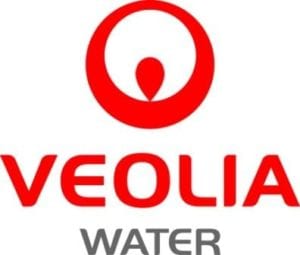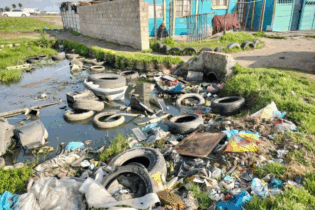Veolia Water Solutions & Technologies South Africa has been awarded a turnkey project valued at R19 million by the Ford Motor Company of Southern Africa for the design, supply, installation and commissioning of a new wastewater treatment plant at the motor manufacturer’s Silverton assembly plant, east of Pretoria.
The wastewater treatment plant (WWTP) will see the first locally installed ContiFilt™ from Veolia’s German subsidiary, Krüger Wabag. This technology uses continuously regenerated sand filtration as opposed to the classic sand filtration with periodic backwash sequence and related downtime. The necessity for the new plant was motivated by the need to increase plant capacity as a result of Ford starting production of the new Ranger bakkie range, resulting in an expected increase in wastewater volume from the plant, as well as the need to meet municipal requirements.“The existing decade-old WWTP previously pre-treated water before it ended up at the Tshwane Sewage Works,” explains Laurent Munier, project manager: Design & Build, Veolia Water Solutions & Technologies South Africa, a subsidiary of Veolia Water. With water recycling and re-use a key focus for Ford, an environmental impact assessment (EIA) was conducted, which recommended further treatment of the effluent to comply with municipal bylaws. “After considering upgrading the existing water plant, it was decided that it will be more cost-effective to rather decommission the old plant and construct a new one, boasting the latest technology,” explains Munier. The new plant has been erected close to the old WWTP. As a large part of the effluent will come from the paint shop, safely getting rid of phosphates is the biggest concern. Ford requires a reject containing less than 20mg/ℓ of phosphate and Veolia is guaranteeing that Ford’s water will comply with the Tshwane Metropolitan Municipality’s bylaws. Recycling of water enhanced Currently, there is an underground sewage pipe running from the production area to the plant. For the new WWTP, a tie-in will be made to that pipe for the collection of the water, resulting in an immediate increase in the use of recycled water from 7 to 15%. Ford has also requested a connection from the new plant to the piping system of one of its other treatment plants to allow the recycling of 25 to 30% more process water. A tank at the existing WWTP will be used as a holding storage for water pumped from the factory. Apart from that, the rest of the existing plant will be bypassed.
Oil-skimming to separate floating oils will take place in this holding tank, after which the water will get pumped to, stored and prepared in three batch tanks at the new WWTP. “Ford does not want to run the plant continuously, but rather for the shifts required, which necessitate storage capacity during the off-shifts. In addition, the batch tanks will offer a closed volume for the chemical dosing required to eliminate phosphates, which will in turn improve chemical control and guarantee the efficiency of the treatment,” says Munier.
The separation of phosphates will be achieved by dosing ferric chloride. As soon as the capacity volume in a batch tank is reached, the water will get pumped through for the next step, which involves clarification. The lamella clarifier, supplied by Veolia’s French subsidiary Opalium, will treat a maximum capacity of 1.8 Mℓ/d of water spread over one eight-hour shift. Flocculants and coagulants will be injected in the clarifier to produce sludge that can settle in the clarifier. As this produced sludge will be light and watery, it will be pumped into a thickener where it will receive further treatment to enable settlement. The thickener will supply the filter press that will dry the sludge, which will then download to a skip. The plant will produce very little waste. All recovered water will be pumped back into the feed tank. The thickener will also provide additional storage capacity as this sludge treatment process will take place only once a day in a six-hour, fully automatic treatment cycle. The clarified water will be sent to the ContiFilt™, consisting of four filters, where the heavy metals in the wastewater will be precipitated. This customised and economic option for many wastewater solutions, both municipal and industrial, offers continuous sand filtration technology. Unlike other sand filters, this one does not need to be shut down for backwashing or cleaning. “The EIA requested that the batch tanks be contained in case of a leak as the raw effluent could have disastrous repercussions if filtered into the environment. To this end, we erected a half-metre high walling with a pumping facility. Water from a leaking tank will be drained into a pit, after which it will be pumped into the holding tank with the lowest level by means of a high capacity pump able to handle huge flow,” concludes Munier. The plant is currently in commissioning phase.







